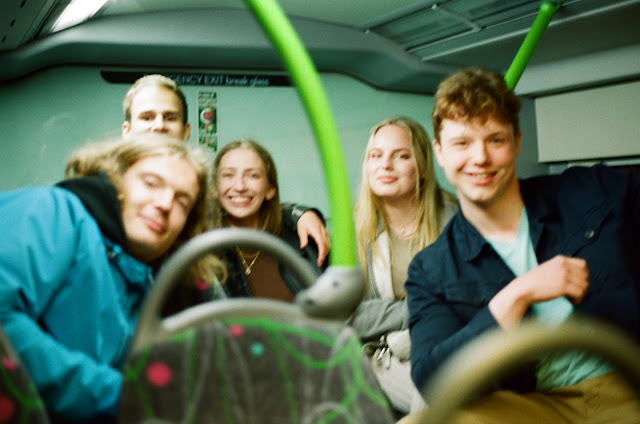My Foray into film photography
Film photography was always somewhat mythical to me. Relative to the 2000s, which marked the most intense period of change in the ever-waging format wars, I was born in just the right timeframe to have never developed a relationship with analog image production. My Dad, being an early adopter of CD's, also bought a digital camera shortly before the turn of the millennium, so all memories that are handed down to me by way of the resulting images have a unique number associated with them. The position and intensity of every ray of light in them is convolved not only with the aperture's Fourier transform, but also with a very narrow envelope function resulting from the use of Bayer grids rather than grains of emulsion (which, after some numerical consideration, clearly affects the image immeasurably, but is nevertheless there). This abstraction was, and still is, a masterful achievement in signal processing, but in order to be good physicists, we should know what on earth people were doing before then.
I'd first realized that cameras hadn't always been these magic boxes that took in light and spat out numbers, when I was looking through the pages of a hands-on science book as a small child. On a certain one, it was explained how a film canister could be converted into a vinegar-soda rocket (with some very 90's looking graphics to illustrate), and so I asked my parents where I could get one. They, after admitting that these aren't really used anymore, briefly showed me leftover negatives they had lying around in some photo binder from before my time, which reminded me of that ladder looking symbol that means "movie" for some reason.
After entering university, and the very tumultuous beginning of the decade, I was once more pushed in the direction of the Silver salts through two friends who indulged. The first, a good friend of mine from Lithuania, Kornelija, who sent me a postcard of a picture of Stirling, Scotland, rendered in this bizarre purple colour scheme. My first-year housemate Harvey had been using 135 for quite a while, and had a lot of impressive photography, involving English landscapes, festivals, double exposure techniques and several very intimate portraits, on his Instagram (before its unfortunate deletion). Meanwhile, I'd been doing a little Astro, mainly on my smartphone and a Sony Alpha a350 from like 2007 that I'd sort of indefinitely borrowed from my Dad, and was therefore somewhat primed by what little of the science I was able to piece together.
Last Monday, I found an Olympus OM-10 with the corresponding 50mm f1.8 lens in fairly good condition online, at a meagre price, which also promptly arrived last Thursday. I then bought some film and got to putting the camera through its paces. Throughout this roll, which I will be posting in reverse chronological order because file indexing hurts my head, I learned the ways of the Silver Halide huffer...
The following were taken between the 26th and the 21st April 2022 using Lomography 400 Colour negative 135 film.
As I have now experienced this tried technique of making really meaningful photos, I suppose I should mention why I now prefer film to digital. Firstly, it requires you to be a mindful physicist, which is something I had not been since March 2020. The process is a form of meditation to me; for that brief moment in which you're twiddling some knobs (hopefully expertly) the world outside your viewfinder ceases to exist (until someone walks through the frame, of course). Secondly, the equipment is less frustrating. A mechanical device has components that I can actually service myself. Everything runs on the potential difference I can suck out of a lemon if need be.
Lastly, and this is a big point of contention among many communities, is the appearance of the resulting images. I have heard it all before, especially in the music community: "Analog is warmer", "There are tones here in these records that don't appear in the files!" and so on. Mathematically, there is nothing in a film image that can't be reproduced numerically. Film images do not capture objective reality the way a CMOS chip does; this is why film fares better for purposes of creative freedom. To say the least, I am hooked, and have ordered enough film now to last me quite a while. Higher ISO rolls incoming, so be on the lookout for some low light stuff.




































Comments
Post a Comment